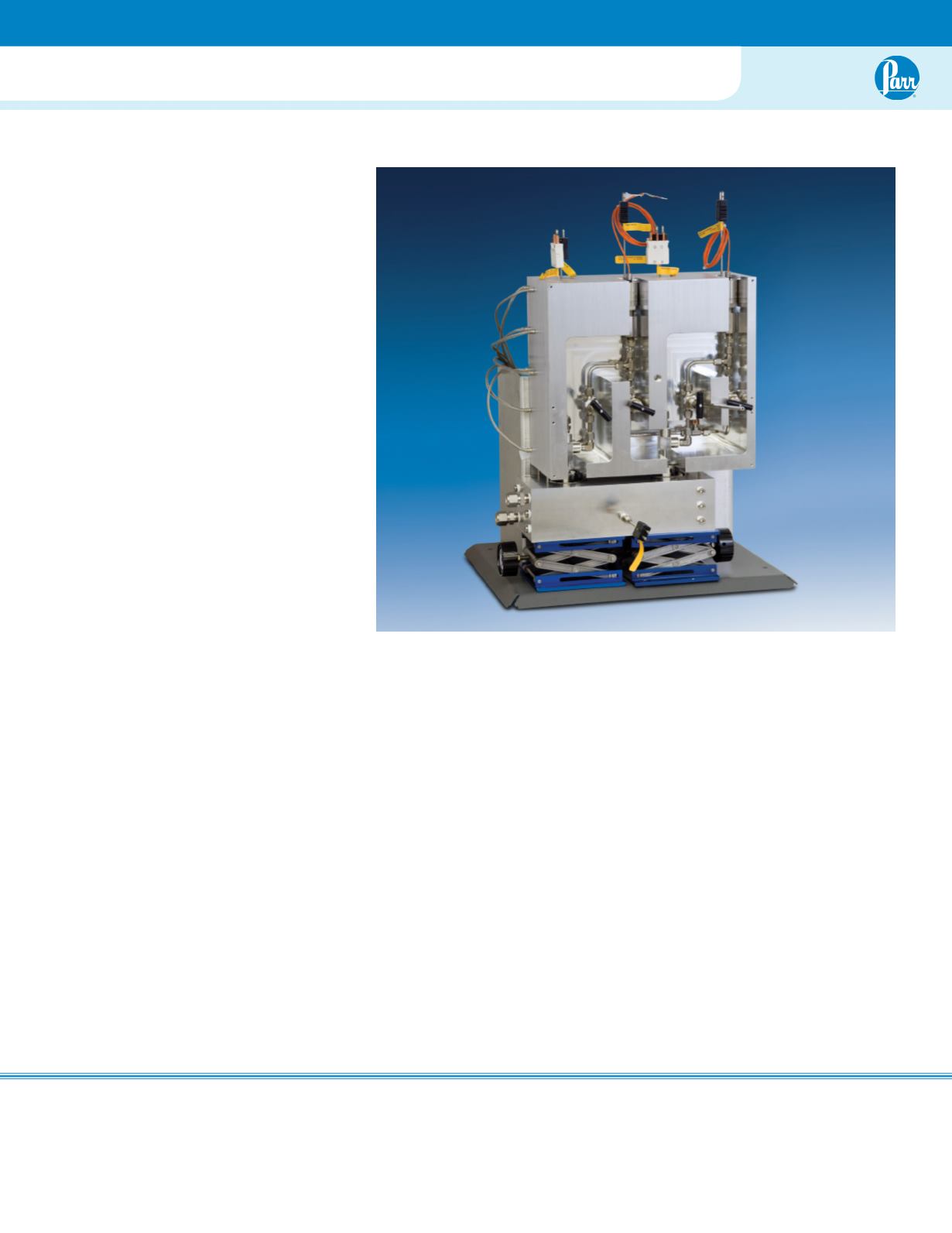
A p p a r a t u s f o r V a p o r P r e s s u r e D e t e r m i n a t i o n
Bulletin CS25MB 1013
P
arr
I
nstrument
C
ompany
211 53rd Street • Moline, Illinois 61265 USA 1-309-762-7716 • 1-800-872-7720 • Fax: 1-309-762-9453
E-mail:
•
Apparatus for Vapor Pressure Determination
A common leak test for Parr pressure
vessels involves filling a vessel with
nitrogen at 300 K to 50 bar followed
by heating it to 600 K. According to
the Ideal Gas Law, doubling the ab-
solute temperature should result in a
doubling of the pressure to 100 bar.
Even when considering changes in
gas compressibility this theoretical
target pressure is rarely achieved.
When the vessel is cooled back to
300 K, a pressure of 50 bar indicates
the vessel is leak free over this tem-
perature span.
The observed pressure at 600 K
is always lower than 100 bar. This
is because the resulting pressure
is indicative of the average tem-
perature of the vessel. This average
temperature is generally lower than
the temperature indicated by a single
point temperature measurement
near the bottom of the vessel. This actively heated
area is typically the hottest location in the system.
Smaller vessels typically exhibit the greatest pres-
sure deviations due to the larger ratio of unheated
to heated surface area.
A similar test, heating a vessel half full of water,
also generally shows a similar deviation from
the published saturation pressure at a given tem-
perature due to the same temperature gradients
resulting from the manner in which the vessel is
heated. Once again, smaller vessels generally
show larger deviations because the average vessel
temperature can be measurably lower than tem-
perature indicated by the single point temperature
sensor immersed in the liquid.
The picture illustrates a custom dual vessel system
for the accurate determination of the saturation
pressure of specialty organic materials as a func-
tion of temperature.
All the associated head fittings, valves, plumb-
ing, and pressure transducers, are enclosed in a
heated, temperature controlled, aluminum block
to minimize temperature gradients and to ensure
that the average system temperature closely
matches the temperature of the vessels, includ-
ing their screw cap closures, housed in the lower
temperature controlled block.The photo shows the
exposed valves and fittings which are covered by
an aluminum plate during normal operation of the
system.
Apparatus for Vapor Pressure Determination


